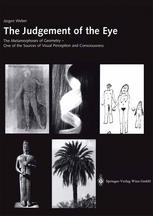

Most ebook files are in PDF format, so you can easily read them using various software such as Foxit Reader or directly on the Google Chrome browser.
Some ebook files are released by publishers in other formats such as .awz, .mobi, .epub, .fb2, etc. You may need to install specific software to read these formats on mobile/PC, such as Calibre.
Please read the tutorial at this link: https://ebookbell.com/faq
We offer FREE conversion to the popular formats you request; however, this may take some time. Therefore, right after payment, please email us, and we will try to provide the service as quickly as possible.
For some exceptional file formats or broken links (if any), please refrain from opening any disputes. Instead, email us first, and we will try to assist within a maximum of 6 hours.
EbookBell Team

4.0
96 reviews6 PART I Geometric Concepts of the Visual Cortex as the Basis of Visual Information Chapter 1 Short Summary of the Main Ideas 9 Chapter 2 What Is Seeing? How Visual Memory Is Affected by Agnosia and Alzheimer's Disease 10 Chapter 3 What Do Infants Recognize and What Do Their Visual Memories Look Like? 14 Chapter 4 The Conclusions of Gestalt Psychology and Its Limitations 19 Chapter 5 My Question: How Do Forms Convey Content; Are There Visual Categories of Expression? 21 Chapter 6 The Rosette 29 Chapter 7 Contraction and Expansion 32 Chapter 8 The Classification of Memory Pictures by Students. Reproduction Memory - Identification Memory 49 Chapter 9 The "Orbits" and Their Application 62 Chapter 10 The Start of Ornamentation All over the World and at All Times 65 Chapter 11 Actual Enlargement and Reduction 69 Chapter 12 Rotated Surfaces 74 PART II l3 Form and Movement 81 Chapter Chapter 14 The Metamorphosis of Geometry in Egyptian Art 89 Chapter 15 The Metamorphoses of Geometry in the Painting and Sculpture of Greece 92 Chapter 16 Movement Schemata 96 Chapter 17 And Once Again the Visual Memory 101 102 Chapter 18 So-called Naturalism 110 Summing-up 114 Bibliography 116 Index ll8 Figures 5 This book is essentially about the question of For more than 20 years I maintained a constant what forms say to us, what information they con dialogue with Rudolf Arnheim.